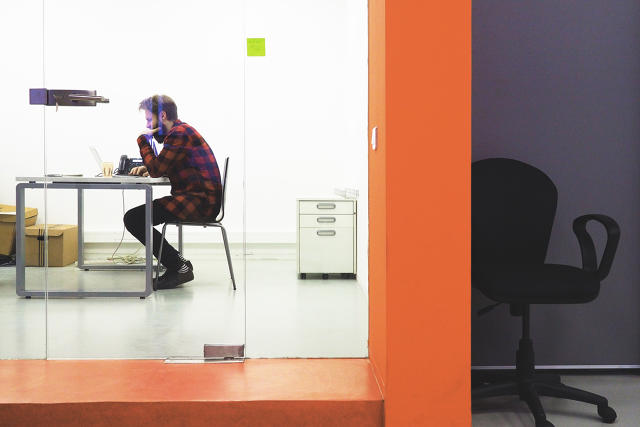Designers: Stop Giving Away Your Work For Free
Unpaid pitching: a controversial topic in the creative industry. For some, unpaid pitching is simply part of the business — a necessary evil to win new clients and projects. For others, it’s seen as an exploitative practice, and the movement against it has gained significant momentum in the industry.
Regardless of your stance, the bottom line remains the same: Many potential clients, especially here in the U.S., will request unpaid “trial” creative work from advertising or design agencies when deciding with whom to work on a project or an account. A “no-pitch” policy might be an agency’s preference, but it’s tough to actually execute. So how can you implement a no-pitch policy and stay competitive?
Those Who Say Yes To Unpaid Pitching

First, a word on why creative agencies accept unpaid work in the first place. At traditional agencies (often advertising firms), pitching for new clients via the infamous RFP (request for proposal) is standard fare. An RFP is sent to an agency’s business development team. A strategy and creative team is selected and then hustles to develop a creative solution to demonstrate the agency’s skill set.
The RFP pitch has been going on since the dawn of time (well, certainly since the dawn of advertising), and creatives usually relish in the chance to participate in a pitch as a break from day-to-day projects, even if it isn’t real paid work. For better or worse, winning the best new accounts and projects in the U.S. mostly happens through unpaid pitches.
Those Who Say No
On the other side of the spectrum are the agencies (usually design agencies) who say no fucking way to work that’s not paid. Why shouldn’t creatives get paid like any other professionals on the planet? Edenspiekermann, where I work, comes from this school of thought.

So Who’s Right?
Let’s be clear, unpaid pitching is bad for the creative industry. This is a fact. Why? Well, for starters:
- It devalues the creative work itself by giving it away for free.
- It devalues the creative industry as a whole by implying creative is less valuable than other professions.
- The (potential) client gets presented half-baked work that is often not fully developed and in reality may not even be possible (especially the case in digital design).
- A client can simply appropriate any pitched idea and get a freelancer or in-house creative to execute it for cheaper.
- What other professional in any industry in the world works for free? Does your doctor? Your Uber driver? Even your priest? I think not. Fuck you, pay me.
So, free pitching is bad. We get it. Why are we still talking about this?
The real answer: A non-pitch policy is difficult to execute
There’s a “but.” And it’s a big but. Unfortunately, as fucked-up as unpaid pitching is, the fact remains that it is a part of the industry, and there are many clients who expect it and don’t see anything wrong with it. This is also a fact. Having a no-pitch policy is easy when you’re an established agency with a strong reputation and flow of clients. It is a lot more difficult when you are a startup office battling tooth and nail to win new clients.
For example, I am currently co-leading the new Edenspiekermann L.A. office, very much in the startup phase. We at Edenspikermann have a strict no-pitch policy, however, the situation is a lot trickier when you’re in a new market with little brand equity. The rulebook goes out the window and you need to be ruthless. To stay afloat you have to win business and do whatever it takes to land clients. Think of it this way: Your business development manager probably invests countless hours in dinners, lunches, phone calls, and general schmoozing with potential clients. For a new company, surely investing a couple of days of free creative works the same?
Agencies are constantly faced with the dilemma: “Do we stop pitching and therefore miss out on accounts, or do we pitch and continue to be a part of the problem?” It’s a chicken and egg situation, and there is no easy answer.
When it is and isn’t okay to pitch
These are the situations when it is somewhat reasonable acceptable to pitch. Don’t get me wrong, I use the word “reasonable” here. The ideal situation is an industry where any unpaid pitching is entirely removed from the equation whatsoever and creative work is fully paid for, plain and simple.
It’s okay to pitch when:
It’s a paid pitch (or at least in part). If a client pays for you to work on a pitch for say, five days, I think it’s absolutely fair game to invest some extra days to win the account.
You should never, ever, ever pitch when:
- It’s a crowdsourcing competition. This is a toxic practice, which, like unpaid pitching, devalues creative work by mining for free ideas. Even worse, it perpetuates the idea that creative is simply a commodity that can be bought off a shelf. The reality is that great creative work comes about in partnership with a client.
- Any pitch that comes without an iron-clad contract that prohibits the use of your creative concepts in the event of you not winning. And please, if clients steal an idea, you should actively pursue and sue the shit out of them. Agencies rarely, if ever, do this—I’ve heard many stories of junior creatives flagging stolen pitch work with senior staff and being told to “drop it” just in case the agency ends up pitching that client again in the future.
Making a non-pitch policy work
What happens in a situation where an RFP from an amazing brand comes in, something that you absolutely can’t pass up, even if it breaks your own “no-pitch” rules? And the potential client insists on some sample creative work with the proposal so they can vet your skills?
The answer: Be different. Every other agency that got the RFP will submit creative work. Especially if it’s a great account. Instead of offering half-baked creative work when an RFP comes in, offer a full-day workshop in their office where the potential client meets you and your team and has a hands-on session where you get to know each other. This will offer far more insight into the merits of a potential partnership than some designed screens you hack into a presentation deck. Explain politely that no creative work created in an isolated silo for a pitch will give them a realistic representation of working with your company. This is an approach we’ve taken time and time again at Edenspiekermann, and it has been a very successful alternative to pitching.
Above all, we have a responsibility to educate our clients about why unpaid creative work isn’t good for you, them, or their business. There’s an opportunity to do this every single time a request for unpaid work comes in. Remember, that pitching has been baked into client-agency culture for decades — if we as a creative industry want to change this, we have a major role to play, too.
Fast Company , Read Full Story
(31)














